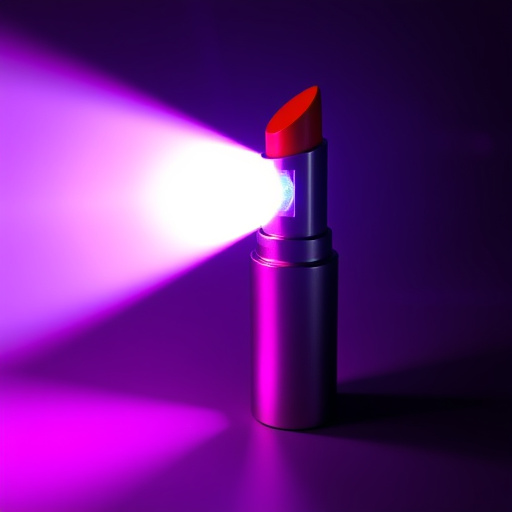In the context of a lipstick stun gun with flashlight, understanding electrical current spread is crucial for optimal design and performance. Engineers analyze how electrons flow through various materials, considering resistance, voltage, and contact area, to ensure efficient power distribution. This knowledge is applied in circuit design, minimizing power loss and heat generation while maintaining bright lighting and potent stun capabilities. Advanced simulation software models real-world scenarios, accounting for variable materials and conditions, leading to proactive design enhancements for reliable performance in compact, multi-functional devices.
“Unveiling the mysteries of electrical current flow is essential in various applications, especially unique devices like the lipstick stun gun with flashlight. This compact weapon not only delivers a powerful shock but also integrates a flashlight, highlighting the importance of understanding current spread patterns.
In this article, we explore ‘Understanding Electrical Current Spread: The Basics’, delve into its practical application with a ‘Lipstick Stun Gun with Flashlight’, and uncover advanced ‘Analysis Techniques for Current Spread Pattern’. We also weigh the ‘Benefits and Considerations’ to ensure safe and effective utilization.”
- Understanding Electrical Current Spread: The Basics
- Lipstick Stun Gun with Flashlight: A Unique Application
- Analysis Techniques for Current Spread Pattern
- Benefits and Considerations of Spread Pattern Analysis
Understanding Electrical Current Spread: The Basics
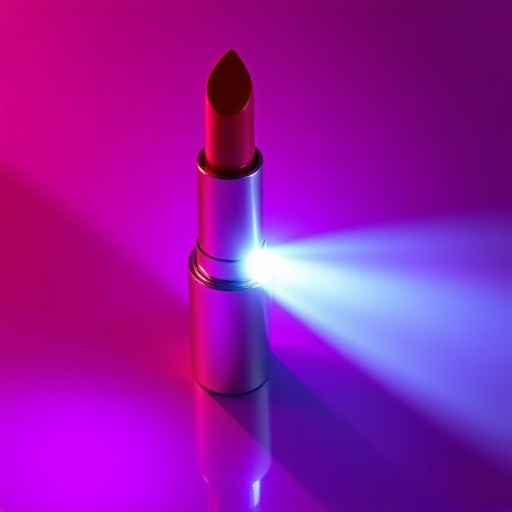
Electrical current spread is a fundamental concept in understanding how electricity flows through different materials. When an electrical charge moves from one point to another, it creates a path known as a conductor. In simple terms, this is how power reaches our devices and lighting up our homes. Imagine a river of water; the current’s flow mimics this movement, with electrons acting as tiny particles swimming against resistance.
The pattern of this current spread is crucial, especially in unusual scenarios like a lipstick stun gun with flashlight functionality. In such devices, the electrical current must efficiently travel through internal components while also illuminating and delivering a shock. Analyzing this spread helps engineers design circuits that optimize performance, ensuring both the light and the stun function effectively without excessive power loss or heat generation—a delicate balance that can be achieved only by understanding how current behaves.
Lipstick Stun Gun with Flashlight: A Unique Application
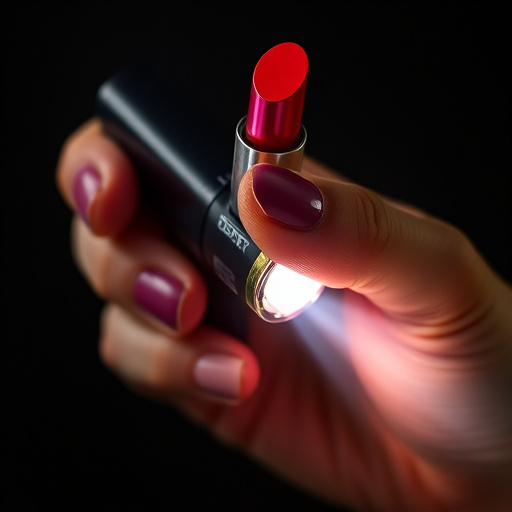
The Lipstick Stun Gun with Flashlight represents a unique fusion of personal safety and illumination, offering users a compact and discreet self-defense solution. This innovative device combines the power of a stun gun with the functionality of a bright flashlight, making it an all-in-one tool for emergencies. The stun gun component delivers a powerful electric current to incapacitate potential attackers, providing a critical advantage in situations where speed and surprise are crucial.
At the same time, the integrated flashlight serves as a beacon in low-visibility conditions, allowing users to navigate treacherous or unfamiliar environments with ease. This dual functionality makes the Lipstick Stun Gun with Flashlight an ideal choice for individuals seeking both personal protection and practical lighting solutions, all housed in an elegant and easily concealable design.
Analysis Techniques for Current Spread Pattern
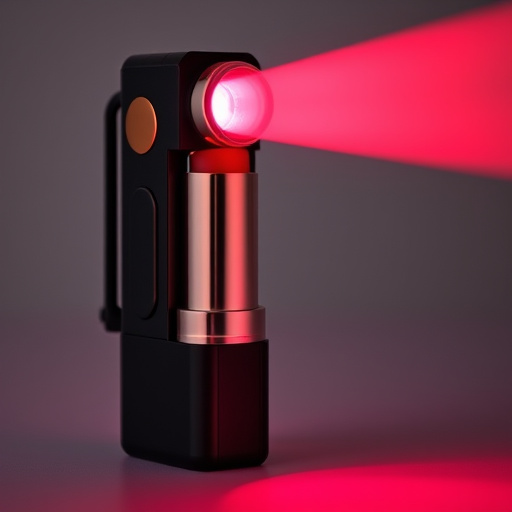
In the realm of electrical safety and weaponry, understanding the spread pattern of current is paramount, especially when considering devices like a lipstick stun gun with flashlight. Analysis techniques for current spread pattern leverage advanced simulation software to model real-world scenarios accurately. These simulations enable researchers and engineers to predict how electric current flows through different materials, including human tissue, under various conditions. By inputting specific parameters such as voltage, conductivity, and contact area, these tools can simulate the effect of a stun device’s electrodes, providing insights into its safety and effectiveness.
Furthermore, experimental methods play a crucial role in current spread pattern analysis. Techniques like galvanometry and electrochemical impedance spectroscopy offer tangible data on current flow dynamics. Researchers apply these methods to study how current distributes across different surfaces, including the skin, which is essential for understanding the potential risks and outcomes associated with non-lethal weapons. For instance, a lipstick stun gun’s unique design and compact size necessitate precise analysis of its current spread pattern to ensure minimal off-target damage while maximizing the intended stun effect, especially considering its integrated flashlight feature.
Benefits and Considerations of Spread Pattern Analysis
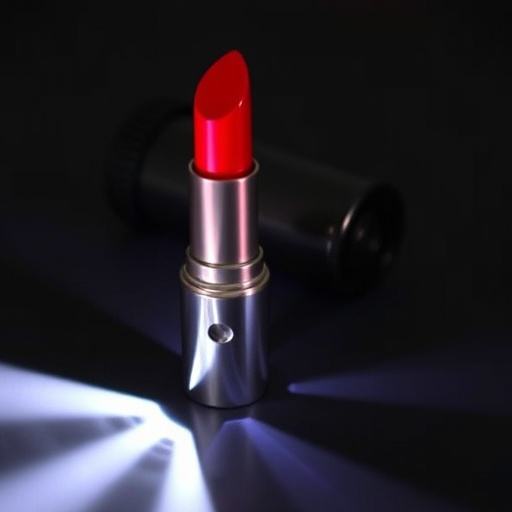
Spread pattern analysis offers several benefits in understanding and optimizing electrical current flow, especially in unique devices like a lipstick stun gun with flashlight. By examining how current spreads across different materials and surfaces, engineers can identify potential bottlenecks or inefficiencies, leading to improved design and performance. This technique is particularly valuable for compact, multi-functional devices where space is limited, ensuring optimal energy distribution without compromising size or weight.
Considerations in spread pattern analysis include accounting for variable materials, thicknesses, and temperature effects on conductivity. In the case of a lipstick stun gun with flashlight, understanding how current flows through the diverse components—from conductive metal parts to insulating casings—is crucial. Advanced modeling tools can simulate these complex interactions, providing insights that traditional testing methods might overlook. This allows for proactive design enhancements, ensuring the device functions reliably under various conditions.
Electrical current spread pattern analysis is a powerful tool, especially in understanding unique applications like the lipstick stun gun with flashlight. By delving into analysis techniques and considering benefits and limitations, researchers can enhance safety features and performance in various devices. This knowledge ensures that innovations like the stun gun, combining functionality with portability, continue to evolve, making them valuable tools for personal security.
